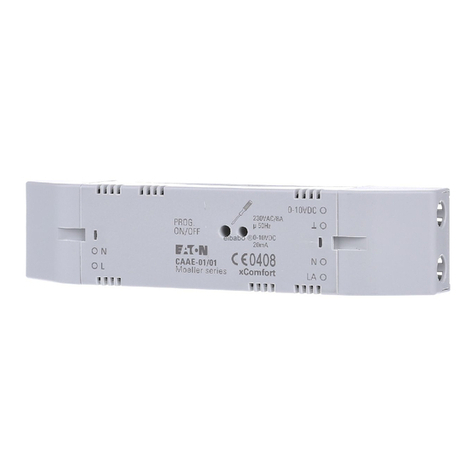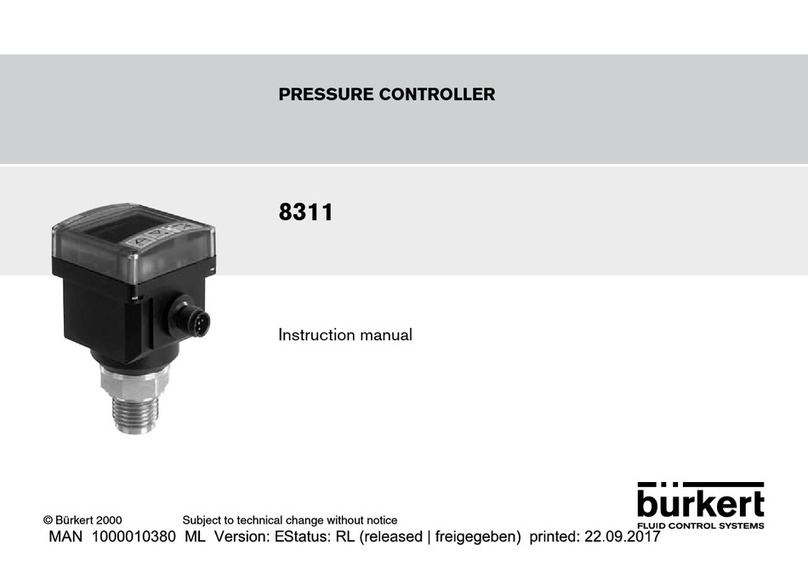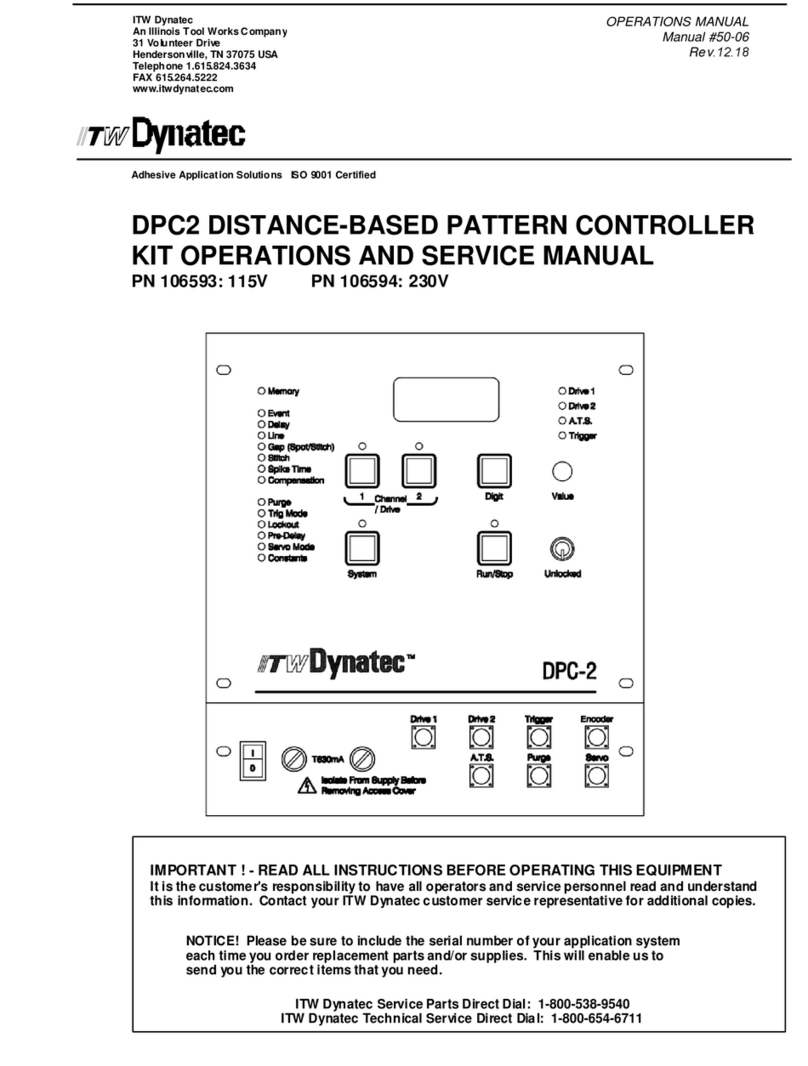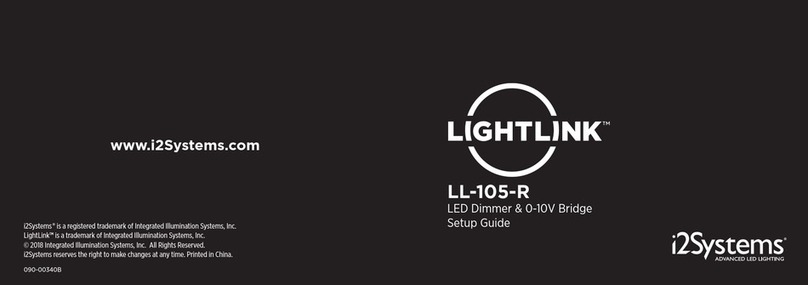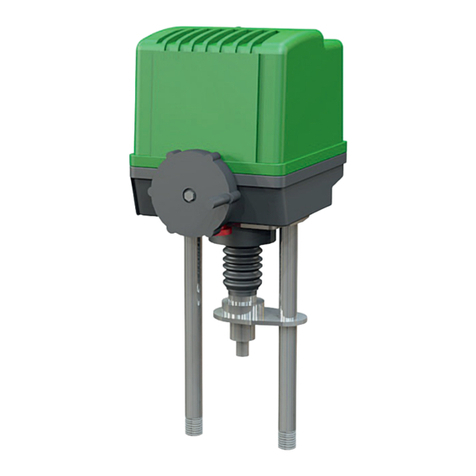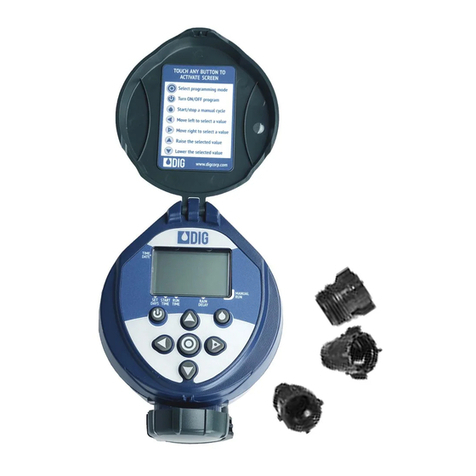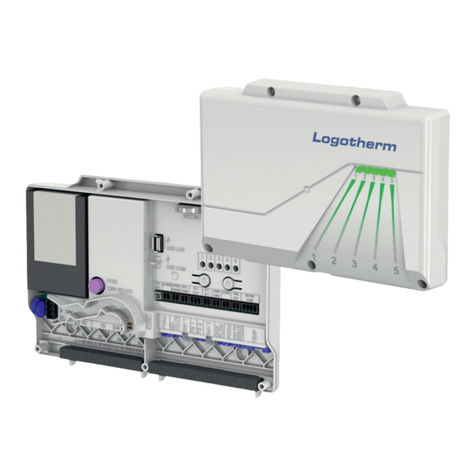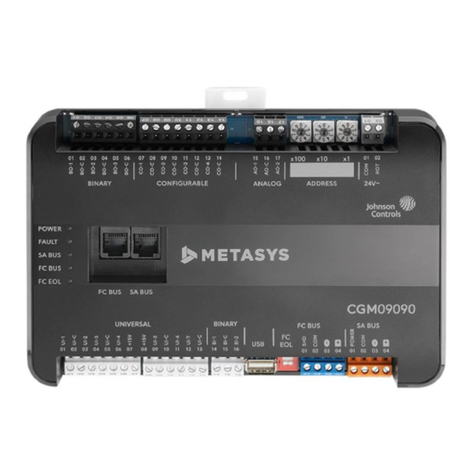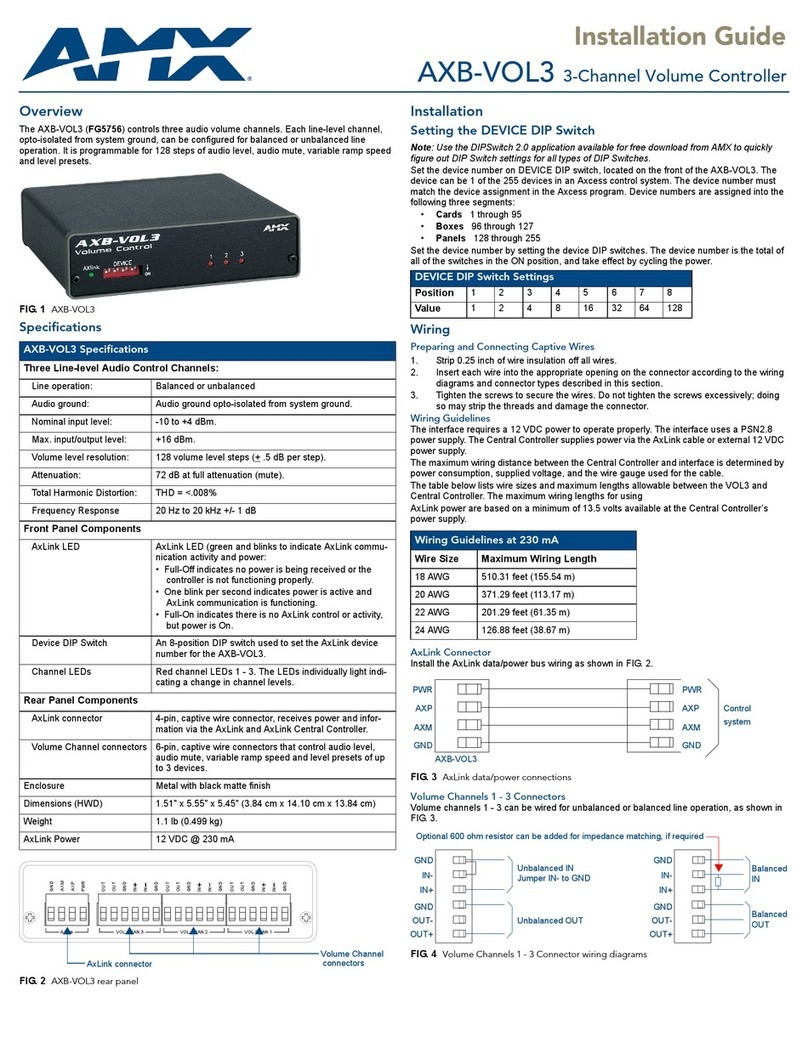Nira i7x User manual

NIRA i7x
Handbook
NIRA i7x Handbook version pA7, August 2016

© 2005-2016 Nira Control AB 2
© Copyright 2005-2016
This handbook is protected by copyright laws. It may not be redistributed in
any form without written consent of Nira Control AB.
Release 2016-08-30
The purpose of this handbook is to serve as a guide during installation and
calibration of NIRA i7x. Descriptions, content and specifications in this
handbook may be changed at any time. This handbook could contain errors –
therefore it should not be regarded as a definitive installation guide. Nira
Control AB is not responsible for any personal or property damages due to
errors in this handbook, the professional installing NIRA i7x is responsible for
the installation.
Misuse of NIRA i7x and/or NIRA rk can cause severe personal injury and
engine damage. Nira Control AB is not responsible for any injuries, accidents
or damages due to misuse or ignorance.
Repairs of NIRA i7x, e.g. replacement of parts, will affect the safety of the
product and are not allowed under any circumstances. Nira Control AB is not
responsible for any problems, accidents etc, caused by non-approved parts
or repairs not carried out by Nira Control AB.
NIRA i7x must be installed by professional automotive technicians in
accordance with the instructions in this handbook, following good practice.
NIRA i7x is only intended for racing use and not for use on public roads. It is
not certified for use on vehicles subject to emission standards unless the
appropriate waivers have been issued. Please check with the relevant
authorities for more information.
NIRA rk is protected by applicable software copyright laws. You may not
distribute this software without the written consent of Nira Control AB. You
may not copy this software. Your purchase of NIRA i7x includes a single
license to use NIRA rk together with NIRA i7x.

© 2005-2016 Nira Control AB 3
1 Overview ...................................................................................................5
1.1 Content of your NIRA i7x Package ....................................................5
1.2 Glossary.............................................................................................6
1.3 NIRA i7x Functionality .....................................................................11
2 Combustion, Lambda and Measurement Principles..................................14
2.1 Relationship Between A/F and Lambda ..........................................14
2.2 The Effect of Different Lambda Values............................................15
2.3 Measurement Principles ..................................................................16
2.4 Fuel delivery ....................................................................................19
3 Installing NIRA i7x....................................................................................22
3.1 Crank Position Sensor (CKP) and Trigger Wheel .............................22
3.2 Cam Position Sensor (CMP) .............................................................26
3.3 Throttle Position Sensor (TPS) .........................................................27
3.4 Manifold Absolute Pressure (MAP) and Intake Air Temp (MAT) ......28
3.5 Boost pressure sensor (pre throttle pressure sensor).......................29
3.6 Engine Coolant Temperature Sensor (ECT).....................................29
3.7 Manifold Air Temperature Sensor (MAT).........................................30
3.8 Lambda Sensor................................................................................30
3.9 Exhaust Gas Temperature. ..............................................................32
3.10 Anti Lag System (ALS) Switch ..........................................................32
3.11 Launch Control Button ....................................................................32
3.12 Aux Inputs .......................................................................................33
3.13 Ignition ............................................................................................33
3.14 Fuel Pressure Regulator (FPR)..........................................................34
3.15 Fuel Injectors ..................................................................................34
3.16 Boost Pressure Actuator ..................................................................35
3.17 IAC (Idle Air Control) .......................................................................37
3.18 Main Relay .......................................................................................39
3.19 Fuel Pump Relay..............................................................................39
3.20 Tachometer .....................................................................................40
3.21 ALS Solenoid ...................................................................................40
3.22 Wheel Speed Sensors......................................................................40
3.23 Aux Outputs ....................................................................................41
3.24 Mounting NIRA i7x in the Car..........................................................41

© 2005-2016 Nira Control AB 4
4 NIRA rk Software......................................................................................43
4.1 Installation of NIRA rk......................................................................43
4.2 Getting Started................................................................................44
4.3 Using NIRA rk ..................................................................................47
4.4 Parameters.......................................................................................49
4.5 PID Controllers ................................................................................60
4.6 Gauges ............................................................................................62
4.7 Logging ...........................................................................................65
4.8 Locking the i3d Data Set .................................................................68
4.9 FlexiPorts™ - Set up........................................................................68
4.10 Auto Fuel Calibration ......................................................................70
4.11 Ignition/Fuel Mapping.....................................................................70
5 Starting the Engine ..................................................................................70
5.1 Setting Up Parameters Offline.........................................................70
5.2 Going Online...................................................................................93
5.3 Quick Troubleshooting Guide .........................................................97
5.4 Other Adjustments ..........................................................................98
6 Mapping your Engine Using NIRA rk ........................................................99
6.1 Tables ..............................................................................................99
6.2 Calibrating Ignition..........................................................................99
6.3 Calibrating Fuel .............................................................................100
6.4 The Engine Runs Unevenly or Stalls ..............................................108
6.5 Adjusting the Boost Pressure Control............................................109
6.6 IAC –Idle Speed Control...............................................................109
6.7 ALS –response system ..................................................................110
6.8 Launch Control ..............................................................................111
6.9 Flat Shift ........................................................................................111
6.10 Traction Control.............................................................................113
7 Electrical Specifications..........................................................................117
7.1 Input ..............................................................................................117
7.2 Output...........................................................................................120
7.3 Communication .............................................................................122

© 2005-2016 Nira Control AB 5
1
Overview
NIRA i7x is a sophisticated electronic engine management system developed
specifically for racing. NIRA i7x controls ignition, fuel injection, idle speed,
boost pressure and several other engine functions. It can be used with many
different types of engines.
1.1 Content of your NIRA i7x Package
When you purchased NIRA i7x, you should have received the following:
NIRA i7x
Wiring harness
NIRA rk calibration software
Communication interface (Kvaser CAN-dongle)
1.1.1 NIRA i7x
NIRA i7x is a highly sophisticated, triple core microprocessor based engine
management system designed for motorsport applications. It controls
ignition, fuel injection, boost pressure, idle speed and several other engine
functions. NIRA i7x offers an unusual level of flexibility in how input signals
are interpreted and processed. It also gives you significant control over the
mapping of the output signals. This allows NIRA i7x to work with many
different sensors, actuators and engine types. Setup, configuration and
programming of NIRA i7x is done via the NIRA rk software.
1.1.2 Wiring Harness
One end of the wiring harness is pre crimped with NIRA i7x terminals. The
terminals are easy to connect to the right position in the NIRA i7x connector.
The other end of the harness is a set of pigtails used for connecting power,
ground, sensors and actuators. To simplify the work of installing the harness,

© 2005-2016 Nira Control AB 6
each wire in the harness is marked every 70 mm (~3”) with its function in
clear text. This makes it possible to cut the wire to desired length and still
read its function.
1.1.3 NIRA rk
NIRA rk is the calibration software that allows you to setup and configure a
large number of parameters in NIRA i7x. It is designed to run on a PC using
the Windows operating system and communicates with NIRA i7x via a Kvase
CAN-dongle.
The many functions of NIRA rk are described in detail starting in chapter 4.
NIRA rk is protected by applicable software copyright laws. You may not
distribute this software without the express written consent of Nira Control
AB. You may not copy this software other than for personal use. Your
purchase of NIRA i7x includes a single license to use NIRA rk together with
NIRA i7x.
1.1.4 Communication interface
The Kvaser CAN-dongle connects NIRA i7x to the PC running NIRA rk
software. The CAN-dongle connects to your PC via a USB port.
1.2 Glossary
Absolute pressure
Absolute pressure is measured starting at 0 kPa.
This is the pressure in vacuum. At sea-level the
absolute pressure is approximately 100 kPa, +/- 10
kPa depending on the weather (high or low
pressure.)
Alpha-N
Methodology to compute the amount of fuel to
inject based only on rpm and throttle angle.
Sometimes referred to as “throttle mapped.”
This mapping approach can be difficult to use and
requires a high resolution throttle position sensor
potentiometer.
On engines with aggressive camshaft profiles, the
pressure in the intake manifold fluctuates
significantly. In such cases it’s not possible to get a

© 2005-2016 Nira Control AB 7
stable MAP reading and throttle mapping is the
only workable approach.
ALS
Anti Lag System. Sometimes called “response
system.” Often used in racing and rally cars with
turbo engines. ALS maintains the boost pressure
even though the throttle is closed. With ALS
engaged, combustion in the exhaust manifold is
common.
Ambient pressure
The pressure around us; approx 90 –110 kPa
absolute pressure depending on the weather (low
or high pressure.) The pressure decreases with
altitude.
Csd
Crankshaft degrees. A four-stroke engine turns
720 crankshaft degrees during one complete
combustion cycle. (The camshaft turns half as fast
as the crankshaft and thus completes 360 degrees
during the four strokes.)
Default values
These are base values or recommended values.
EGTC
Exhaust Gas Temperature Control. Nira-developed
exhaust gas temperature measurement unit. Can
be connected to NIRA i7x.
GND
Ground (kl31)
Grounding can be done to the body, engine block
or directly to the battery. Ground is sometimes
referred to as minus or 0 Volt. Poor ground
connections can cause problems that are hard to
find. Make sure the ground connections are
proper.
MAP
Manifold Absolute Pressure. Pressure in the intake
manifold after the throttle plate. On a naturally
aspirated engine this varies between 25kPa and
100kPa.
MAT
Intake Air Temperature or Manifold Air
Temperature. Refers to the temperature of the air
in the intake manifold. The temperature can be as
much as 150 degrees hotter than the ambient air
temperature on a turbo charged engine.
The density of the air decreases with increasing
temperature. Therefore it’s important to be able to
measure the temperature accurately in order to
determine the engine load.

© 2005-2016 Nira Control AB 8
Premature detonation
(knock)
The flame front in the combustion chamber
advances at around 1 000 m/s instead of the
normal 100 m/s due to detonation instead of
controlled combustion.
Knocking results in very high local combustion
temperatures and damaging local detonations.
Pull-up resistor
A pull-up resistor connects an input or an output to
+12 V (or +5 V). It pulls up the voltage on the input
or output to +12 V (or +5 V).
Pull-down resistor
A pull-down resistor connects an input or an
output to ground (0V). It pulls down the voltage on
the input or output to ground level (0V).
Sequential injection
Each injector on/off is timed independently of all
other injectors.
By taking camshaft timing into account, the engine
can be made to run more smoothly and efficiently
and to provide more low-end torque.
Speed-density
A simple and straightforward method for
calculating the correct amount of fuel to inject
based on MAP, MAT and the engine speed.
Because MAP is used, any changes in ambient
pressure are accounted for.
Terminal 15 (kl 15)
Terminal 15 is a term used to describe battery
voltage (+12 V) after the ignition switch. Most
sensors and actuators used with NIRA i7x that
require battery voltage should be connected to
terminal 15.
Terminal 30 (kl 30)
Terminal 30 is a term used to describe battery
voltage (+12 V)
Terminal 31 (kl 31)
Se Ground
Throttle
The throttle is controlled by the gas pedal and
determines the amount of air entering the intake
manifold.
VE
(Volumetric Efficiency)
A V.E. value of 1.0 means that 100% of the cylinder
volume gets filled during the intake stroke. For
example, if the cylinder volume is 500 cc, the
engine breathes in exactly 500 cc of air.
Do not confuse V.E. with engine efficiency. A V.E.
value above 1.0 means there’s some amount of
supercharging due to resonance, which is unusual.
If, during calibration, the V.E. table has values
above 1.1, or the lambda table is not in line with

© 2005-2016 Nira Control AB 9
actual (measured) lambda, you may have made a
mistake.
Many standard engines have an average V.E. of
0.85.
60-2 lost
Common pattern on the crankshaft trig wheel. The
trig wheel has 58 tooth-window pairs, spaced 6
degrees apart. Two tooth-window pairs are
missing (“2-lost”) and the resulting wider window
serves as the reference point.

© 2005-2016 Nira Control AB 10
1.2.1 NIRA Rk Naming
Abbreviation
Meaning
Description
Als
Anti Lag System
-
Am
Air Mass
-
App
Accelerator Pedal Position
-
Bac
Boost Actuator Control
This is used if a
boost actuator is
used with position
feedback
Bc
Boost Control
Normally used in
Motorsport if not an
advanced boost
control is used (for
example VGT with
position feedback)
Bv
Base Variable
Variables to show
the user data. For
example Engine
Coolant temperature
Dge
Diagnostic
-
Di
Digital Input
-
Do
Digital Output
-
Es
Engine State
-
Esc
Engine Speed Control
-
Etm
Electronic Throttle Module
-
Fm
Fuel Mass
-
Ign
Ignition
-
Lmc
Lambda Module Control
-
Tpu
Time Process Unit
Processor that read
values from time
critical sensors (for
example crank
sensor)
Vh
Vehicle
Example traction
control variables
(TC).

© 2005-2016 Nira Control AB 11
1.3 NIRA i7x Functionality
NIRA i7x reads sensor values, processes the data and sends output signals to
various actuators.
NIRA i7x is a fully sequential engine management system for engines with up
to 8 cylinders.
By using the NIRA rk software, you have the ability to modify many of the
parameters that control the data processing and the output signals in NIRA
i7x.
Picture 1-1: Overview of NIRA i7x inputs and outputs.
Picture 1-1 above shows the input signals and the output controls of NIRA
i7x. Section 1.3.1 below lists all sensors used by NIRA i7x. Section 1.3.2 lists
additional input controls used by NIRA i7x and section 1.3.3 lists output
functions.
1.3.1 Sensors
MAP sensor (Manifold Absolute Pressure)
Boost sensor (Pre throttle pressure measurement)
MAT sensor (Manifold Air Temperature)
CKP sensor (Crankshaft Position) Inductive or Hall
TPS (Throttle Position Sensor, measures the throttle butterfly angle)
CMP sensor (Cam Position. The crankshaft rotates two revolutions per
four strokes in a four-stroke engine. The camshaft rotates half as fast as
the crankshaft so it completes one revolution per four strokes. The

© 2005-2016 Nira Control AB 12
CMP sensor is used to determine in which of the two crank revolutions
the engine is. This is used during cranking.) Inductive or Hall
ECT (Engine Coolant Temp)
Fuel Temperature (for display purpose)
Fuel Pressure
Oil Pressure
Lambda sensor (NIRA i7x Street controls Bosch LSU 4.9 lambda
sensor without external electronics)
EGTC (Exhaust Gas Temperature. Measures the exhaust gas
temperature in the exhaust manifold where the headers collect. NIRA
i7x handles either digital egtc reading, resistive reading or 0-5V analog
input)
Flat Shift Switch
11 Aux inputs ( 3 Analog inputs, 6 Resistive temp sensors, 2 Digital
inputs)
1.3.2 Input Controls (driver controlled)
Switch for Anti Lag System (ALS, response system)
Button for Launch Control
1.3.3 Output Functions
NIRA i7x processes the input signals and controls the output signals in order
to manage the following actuators.
8 Fuel injectors (amount and sequence)
8 Ignition coils (timing and dwell time). NIRA i7x controls active coils
(with integrated drivers) or passive coils that are connected to NIRA
i7x via an external ignition driver
Boost pressure control valve (controls boost pressure H bridge or
PWM output)
IAC (Idle Air Control; controls engine idle speed via ignition
compensation and an IAC valve or motor)
Fuel pump relay
Main relay (for actuator power supply)
Fan relay (for controlling radiator fan)
Tachometer output (engine speed)

© 2005-2016 Nira Control AB 13
ALS solenoid (for additional bypass air)
4 Aux outputs ( Auxiliary relay control and 3 PWM outputs)
Electronic throttle actuator
In addition to standard engine management, NIRA i7x includes a set of
additional engine control strategies and functions. These are listed in section
1.3.4 and are described in detail later in this manual.
1.3.4 Additional Control Strategies/Functions
Launch Control –enables fast take-offs with stable, pre-programmed
torque values
Anti Lag System (ALS) –maintains boost pressure during shifts and
when letting off on the gas
Flat Shift –reduces engine torque to enable quick gear shifts
FlexiPorts™ - a very advanced function that controls fuel injection,
ignition, boost pressure and Launch Control in relation to input axes
configured during calibration
Acceleration Fuel Enrichment –advanced fuel enrichment during
acceleration
Cranking Fuel Enrichment –allows precision control of fuel injection
during cranking based on parameters such as ambient temp, time
since last cranking attempt etc
Alarms –adjustable alarm thresholds reduce the risk of engine
damage
Limp home –any input sensor value out of range is replaced with a
reasonable value to keep the engine running, albeit at reduced power.
Sets error code
Diagnostics –read error codes
Logging –advanced data logging and graphical analysis tools in NIRA
rk software

© 2005-2016 Nira Control AB 14
2
Combustion, Lambda and
Measurement Principles
For combustion to take place, oxygen needs to be available. The oxygen
content of the air changes with air temperature and pressure. In an engine
there are different ways of measuring the amount of air entering the engine,
but regardless of the technique used, some way of converting the
measurements into an absolute air mass is needed.
Once the air mass has been calculated, it’s possible to meter the amount of
fuel needed. The optimal air to fuel ratio, as measured in weight, depends on
the type of fuel.
For instance, 1 gram of standard gasoline should be mixed with 14.6 grams
of air to achieve complete combustion. This air/fuel ratio is known as the
stoichiometric ratio and is also referred to as lambda 1.0. A richer mixture
(more fuel) results in lambda < 1.0. A leaner mixture results in lambda > 1.0.
Lambda is central to the calibration of NIRA i7x and it’s important to
understand what it represents and how it’s used.
2.1 Relationship Between A/F and Lambda
A/F means Air-Fuel ratio. It’s always given as a ratio of masses. The
stoichiometric A/F is different for different types of fuel.
Example of stoichiometric A/F ratios:
Air/98 Octane Gasoline = 14.6
Air/Methanol = 6.8
Air/Ethanol = 9.0
Air/E85 = 11

© 2005-2016 Nira Control AB 15
Lambda is defined as:
λ= (actual air fuel ratio)/(stoichiometeric ratio)
The definition of lambda is the same regardless of fuel type, which is
advantageous, especially when switching between fuels.
Example of lambda calculation (using gasoline):
If an engine is running lean, the actual A/F may be 15.4:1.
λ= 15.4/14.6 = 1.05
If an engine is running rich, the actual A/F may be 14.0:1.
λ= 14.0/14.6 = 0.96
Some wide-band lambda sensors use A/F in their specs, so it is important to
understand the relationship between A/F and lambda.
2.2 The Effect of Different Lambda Values
If lambda is far from 1.0, the air-fuel mixture can’t be ignited. This causes
engine misfires. The point at which these occur depends on several different
parameters, such as the temperature in the combustion chamber, the
efficiency of the ignition system and how well mixed the air and fuel are.
Typically, lambda has to stay within the 0.7 –1.2 range.
If the air and fuel haven’t mixed fully before ignition, some amount of fuel will
be wasted. This is common, especially during transients and at low rpm’s.
Consequently, most engines run better when the mixture is a bit richer than
lambda 1.0. A good rule of thumb is 5-7% richer, or lambda 0.95-0.93.
Adding even more fuel usually lowers engine efficiency at a given intake air
pressure but it also cools the combustion chamber. This is exploited in turbo
charged engines where the boost pressure can be increased somewhat while
avoiding premature detonation, or engine knock.
The end result is that by running a turbo engine extra rich, you can gain more
power. On a normally tuned turbo engine, it’s common to adjust lambda
down towards 0.84. On an aggressively tuned engine, lambda may have to
go even lower if there are problems with the exhaust gas temperature being
too high.

© 2005-2016 Nira Control AB 16
2.3 Measurement Principles
All engine management systems have to determine engine position and
calculate the correct mass of fuel to inject for a given mass of air. The masses
of the fuel and air vary with temperature and pressure.
2.3.1 Angular positioning
The engine angular position of the crank shaft is crucial for accurate engine
control.
The most common types of sensors used for angular positioning in
automotive applications are
Hall sensor
Inductive sensor
Hall sensor
The Hall Effect is based on a magnetic field that affects electrons moving in a
conductor. The sensor is in need of power supply and the output is a square
wave with fixed voltage levels. The output level is equal or less the supply
voltage.
Example of CKP & CMP hall sensors plotted over one revolution. “CKP is a 24-1 pattern”
Inductive sensor
The inductive sensor or VR sensor (Variable Reluctance) uses the
phenomenon of induced voltage in the sensor. The voltage is induced when
ferrite steel passes the sensor and changes the flux through the sensor’s built
in magnet. Therefore the sensor is not in need of any power supply. The
output voltage from the sensor will go from negative to positive values. The
output levels from the sensor will increase proportionally to the speed of the
tooth passing the sensor.

© 2005-2016 Nira Control AB 17
Example of an inductive CKP sensor signal when a ”2 lost” is detected from a pulse wheel
with a ”60 – 2 lost” pattern
Zero crossing detection and crank polarity
When using an inductive sensor the system uses zero crossing detection to
determine the position of the crankshaft.
Examlpe of zero crossing detection for falling & rising edge.
The picture above shows two types of zero crossing.
The red circle shows zero crossing at the transition from high level to
low level, falling edge
The blue circle shows zero crossing at the transition from low level to
high level, rising edge. In the “lost gap” the zero crossing is widely
spread and can’t be uniquely defined
By swapping the polarity of the inductive sensor the signal will be inverted.
NIRA i7x uses zero crossing detection at falling edge, which means the scope

© 2005-2016 Nira Control AB 18
picture has to look like the pictures above. The level transition through the “2
lost”-gap cannot be falling in this case.
Example of wrong polarity at inductive sensor. The level transition through the gap is falling
and the zero crossing will be undefined in the blue circled area.
2.3.2 Volumetric Efficiency (VE)
For controlling the air mass flow through the engine, a volumetric efficiency
model can be used. The VE model uses Manifold Air Pressure or Throttle
Position sensor together with Engine Speed to choose a VE value. The VE
value is volumetric fill rate of the displacement and calculated for every
stroke. A VE value of 1 means that 100 % of the cylinder is filled with air
during intake stroke. For example, if the cylinder volume is 500 cc, the
engine breathes in exactly 500 cc of air while the intake valve is open.
VE to Fuel Mass
With the density of air, the volume can be converted to air mass filled into
the cylinder every stroke. Based on the air mass filled into the cylinder it is
possible to calculate fuel mass based on the desired A/F-ratio.
Volumetric Efficiency and Boost Pressure
The Volumetric Efficiency does not have to increase with increased boost
pressure. The intake air mass will increase and thus, the volume filled into the
cylinder contains compressed air. If high exhaust manifold pressure occurs,
the VE might even decrease.

© 2005-2016 Nira Control AB 19
2.3.3 Mass Airflow Sensors (MAF)
Most modern engines have MAF sensors. These essentially weigh the
incoming air before it enters the engine. The engine control system receives
information about how many grams of air/millisecond have passed through
the MAF sensor.
Using a MAF has a major advantage in that it reports only the amount of air
that actually enters the engine. Engine wear during a long life is factored in
automatically using this approach. Additionally, MAF sensors simplify the fuel
calibration significantly. This was especially important many years ago when
the computational power of the microprocessor in the engine management
system was limited.
Today, MAF is the standard because of strict emission standards that apply
during the entire life of the engine. There are, however, several
disadvantages:
MAF sensors are slow to react, expensive and sensitive to damage.
There are often problems using MAF sensors on aggressively tuned
engines because the sensor can break due to high airflow
The sensor itself is mounted in a housing, which represents a
restriction to the intake air
There are also problems with oil entering the intake tract from the
turbo due to the restriction
2.3.4 Alfa-N and Speed-Density
During the mid-1990’s many cars used speed-density systems. Speed-density
systems have no restrictions in the intake tract (as compared to MAF sensor
systems) and the precision was good enough over the lifetime of the engine
to meet the emission rules of the time.
On low cost vehicles, Alfa-N systems were common. Alfa-N systems are very
inexpensive to manufacture because they only require a high-precision TPS.
Unfortunately, as the engine wears, the TPS value no longer is a correct
measure of how much air the engine takes in and this leads to emissions
related problems
NIRA i7x has the capability to control fuel injection (and ignition) based on
speed-density, Alfa-N -- or a combination of the two.
2.4 Fuel delivery
See the example picture below over a fuel delivery system.

© 2005-2016 Nira Control AB 20
Fuel Rail
Fuel Pump
FPR
Fuel Tank
Manifold
Air
Pressure
Low fuel pressure
High fuel pressure
Low fuel pressure. Back flow
Manifold Air Pressure
Overview of fuel delivery system
Fuel Pump: The purpose is to pump fuel from the tank or catch tank
and pressurize the fuel rail
Fuel Rail: The hardware connection that feed the injectors with
pressurized fuel
FPR (Fuel Pressure Regulator): FPR controls the fuel pressure by
controlling backflow. The FPR is often adjustable to set the base
pressure.
A hose from the manifold is connected to the FPR with purpose to
increase or decrease the fuel pressure when manifold air pressure
changes. The most common is to increase the pressure in a linear
relationship
Injector: Injectors supply the engine with fuel by injecting fuel in the
inlet port. The injectors are electrically controlled by NIRA i7x.
2.4.1 Why use a Fuel Pressure Regulator with MAP Feedback
As described above, the fuel pressure is increased with raised manifold air
pressure. The reason for this is to keep the same pressure balance over the
injector.
Table of contents
Other Nira Controllers manuals
Popular Controllers manuals by other brands

Bray
Bray SERVO PRO 70 Series Operation and maintenance manual

ABB
ABB AC500-S Application note
Inficon
Inficon Cygnus 2 operating manual

Micronix
Micronix MP-21 Series Reference manual
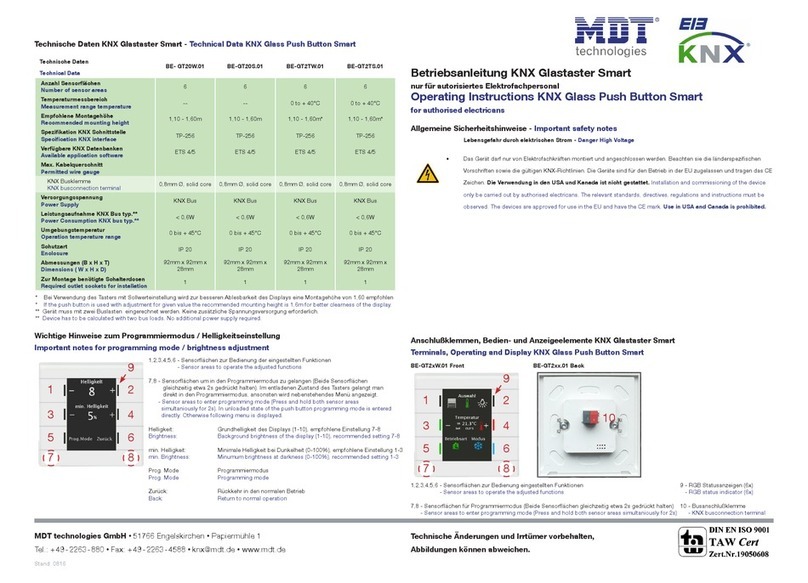
MDT Technologies
MDT Technologies BE-GT2TW.01 operating instructions

Samson
Samson TROVIS 5575 Mounting and operating instructions

